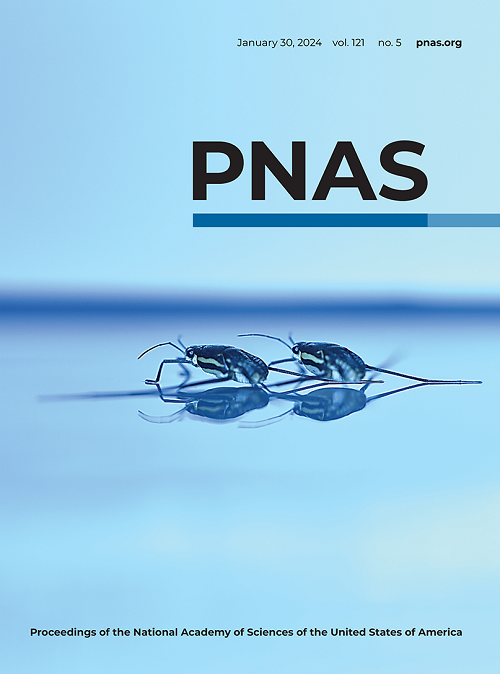Adaptive ATP-induced molecular condensation in membranized protocells
IF 9.4
1区 综合性期刊
Q1 MULTIDISCIPLINARY SCIENCES
Proceedings of the National Academy of Sciences of the United States of America
Pub Date : 2025-03-24
DOI:10.1073/pnas.2419507122
引用次数: 0
Abstract
Liquid–liquid phase separation (LLPS) has been achieved in various cytomimetic (protocell) models, but controlling molecular condensation using noninert crowders to systematically alter protocell function remains challenging. Intracellular ATP levels influence protein–protein interactions, and dysregulation of ATP can alter cellular crowding dynamics, thereby disrupting the normal formation or dissolution of condensates. Here, we develop a membranized protocell model capable of endogenous LLPS and liquid–gel-like phase separation through precise manipulation of intermolecular interactions within semipermeable polysaccharide-based microcapsules (polysaccharidosomes, P-somes), prepared using microtemplate-guided assembly. We demonstrate that intraprotocellular diffusion-mediated LLPS can be extended into the liquid–gel-like domain by the uptake of the biologically active crowder ATP, resulting in a range of modalities dependent on the fine-tuning of molecular condensation. Endogenous enzyme activity in these crowded polysaccharidosomes is enhanced compared to free enzymes in solution, though this enhancement diminishes at higher levels of intraprotocellular condensation. Additionally, increased molecular crowding inhibits intraprotocell DNA strand displacement reactions. Our findings introduce an expedient and optimized approach to the batch construction of membranized protocell models with controllable molecular crowding and functional diversity. Our mix–incubate–wash protocol for inducing endogenous LLPS in membranized protocells offers potential applications in microreactor technology, environmental sensing, and the delivery and sustained release of therapeutics.膜化原生细胞中由 ATP 诱导的适应性分子凝聚
液-液相分离(LLPS)已经在各种细胞模拟(原始细胞)模型中实现,但使用非惰性拥挤剂控制分子凝聚来系统地改变原始细胞功能仍然具有挑战性。细胞内ATP水平影响蛋白质之间的相互作用,ATP的失调可以改变细胞拥挤动力学,从而破坏凝聚物的正常形成或溶解。在这里,我们开发了一种膜化的原始细胞模型,能够内源性LLPS和液凝胶样相分离,通过精确操纵半透性多糖微胶囊(多糖体,p -体)内的分子间相互作用,使用微模板引导组装制备。我们证明了细胞内扩散介导的LLPS可以通过摄取生物活性分子ATP扩展到液凝胶样结构域,从而产生一系列依赖于分子凝聚微调的模式。与溶液中的游离酶相比,这些拥挤的多糖体中的内源性酶活性增强,尽管这种增强在较高水平的原细胞内凝聚时减弱。此外,增加的分子拥挤抑制原细胞内DNA链位移反应。我们的发现为批量构建具有可控分子拥挤和功能多样性的膜化原始细胞模型提供了一种便捷和优化的方法。我们在膜化原始细胞中诱导内源性LLPS的混合孵育-洗涤方案在微反应器技术、环境传感以及治疗药物的递送和持续释放方面具有潜在的应用前景。
本文章由计算机程序翻译,如有差异,请以英文原文为准。
求助全文
约1分钟内获得全文
求助全文
来源期刊
CiteScore
19.00
自引率
0.90%
发文量
3575
审稿时长
2.5 months
期刊介绍:
The Proceedings of the National Academy of Sciences (PNAS), a peer-reviewed journal of the National Academy of Sciences (NAS), serves as an authoritative source for high-impact, original research across the biological, physical, and social sciences. With a global scope, the journal welcomes submissions from researchers worldwide, making it an inclusive platform for advancing scientific knowledge.

 求助内容:
求助内容: 应助结果提醒方式:
应助结果提醒方式:


